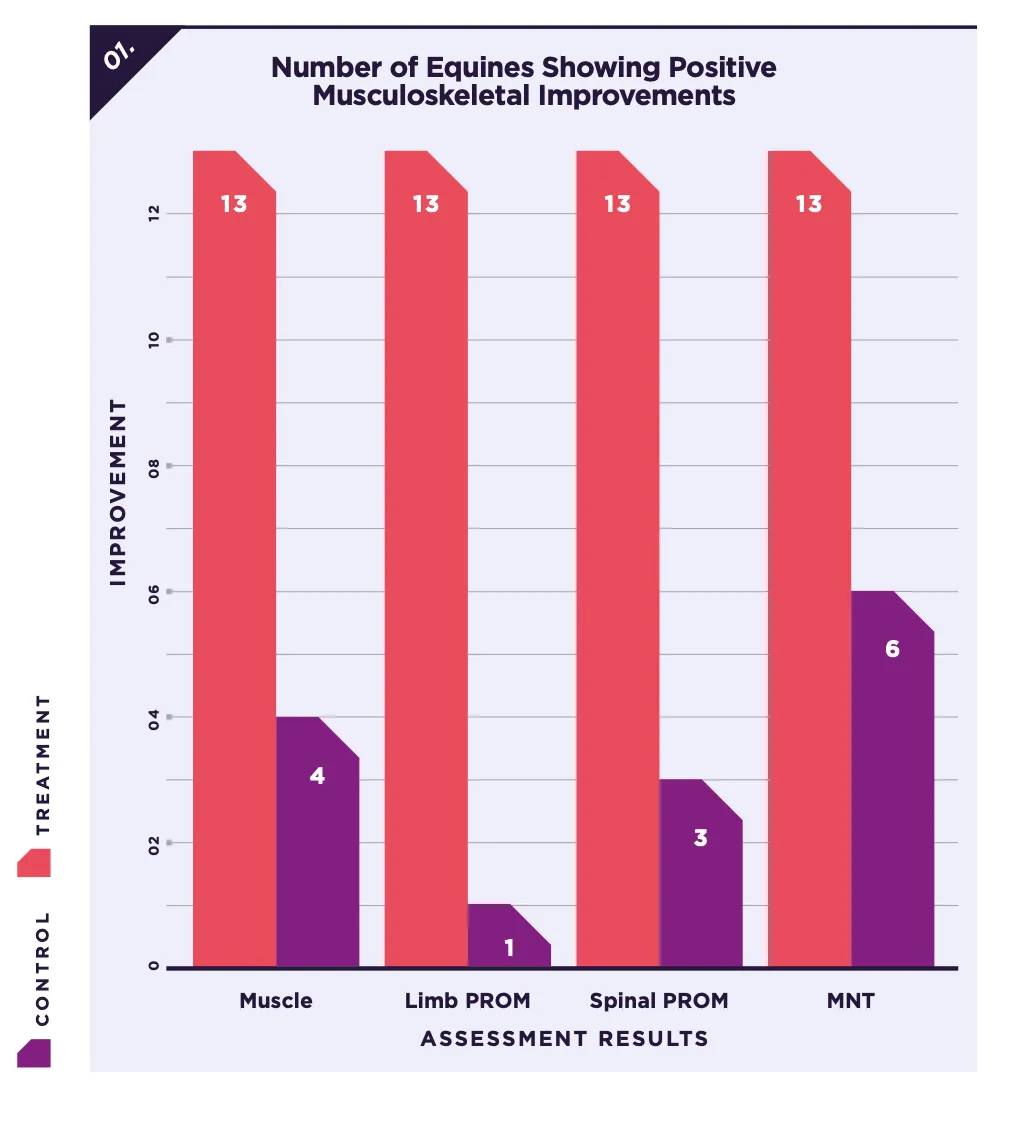Proven benefits in treating equine musculoskeletal pain with PEMF
Establishing the effects of high intensity PEMF on musculoskeletal pain in horses. By Andrea Good, BSc (Hons) Vet Phys

Background:
Andrea Good is a Veterinary Physiotherapist and horse owner, based in the UK. With hands-on experience of how injury, tight, stiff muscles, decreased flexibility and range of motion can affect horses, Andrea knows the importance, both personally and professionally, of the right treatment.
As part of her extensive studies, Andrea loaned a high intensity PEMF machine from Hofmag to use in a study to establish its effects on musculoskeletal pain in horses. There was no funding for this study by Hofmag and Andrea had no affiliation with the company and can, therefore, be considered independent. The only contribution given by Hofmag was the advice to use the machine during the study for 30 minutes a day, for 5 consecutive days, in order to measure the therapeutic effect in a short space of time.
Study design:
- The study was conducted as a blinded, randomised control trial (RCT). RCTs are considered the gold standard when attempting to establish the efficacy of an applied intervention with no selection bias and a robust, statistically significant outcome.
- 22 horses were included in total. There were 9 in the control group, and 13 in the treatment group.
- None were classified as lame but all were experiencing some level of musculoskeletal pain.However, they were all confirmed by their primary care vet as having no major prior pathology and none were on any medication.
- The blinded assessor, who was qualified in equine massage and rehabilitation, was not privy to which horse was allocated to which treatment group.
- The horses in the treatment group received the prescribed treatment of 30 minutes daily for 5 consecutive days, while the control group received no treatment.
- On day 6, the same blinded assessor returned to retake outcome measurements.
- Four assessments were used to assess outcomes on each horse on day zero,and the same four were carried out on day six – muscle palpation, limb passive range of motion (PROM),spinal PROM and mechanical nociceptive threshold (MNT).
The results:
- The only horses to improve in all our assessment categories were those in the treatment group
- A P value of less than P=0.05 was returned for all four assessments.
In particular, the limb and spinal PROM assessments returned a P value of less than P=<0.001. In other words, there is a less than a 0.1% chance that the changes observed were down to anything other than the treatment by the Hofmag device. - This means a clinically significant result in all four assessments.




